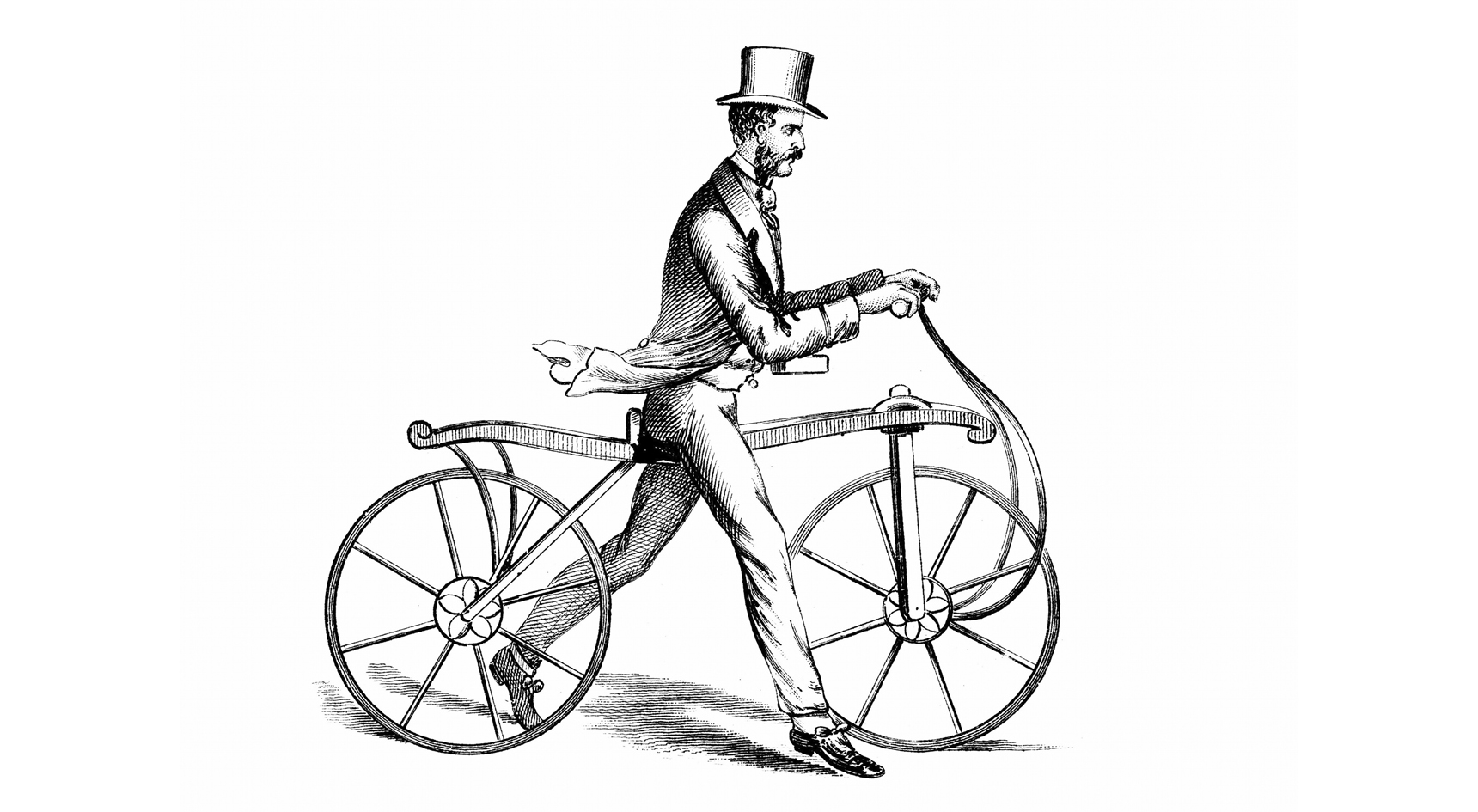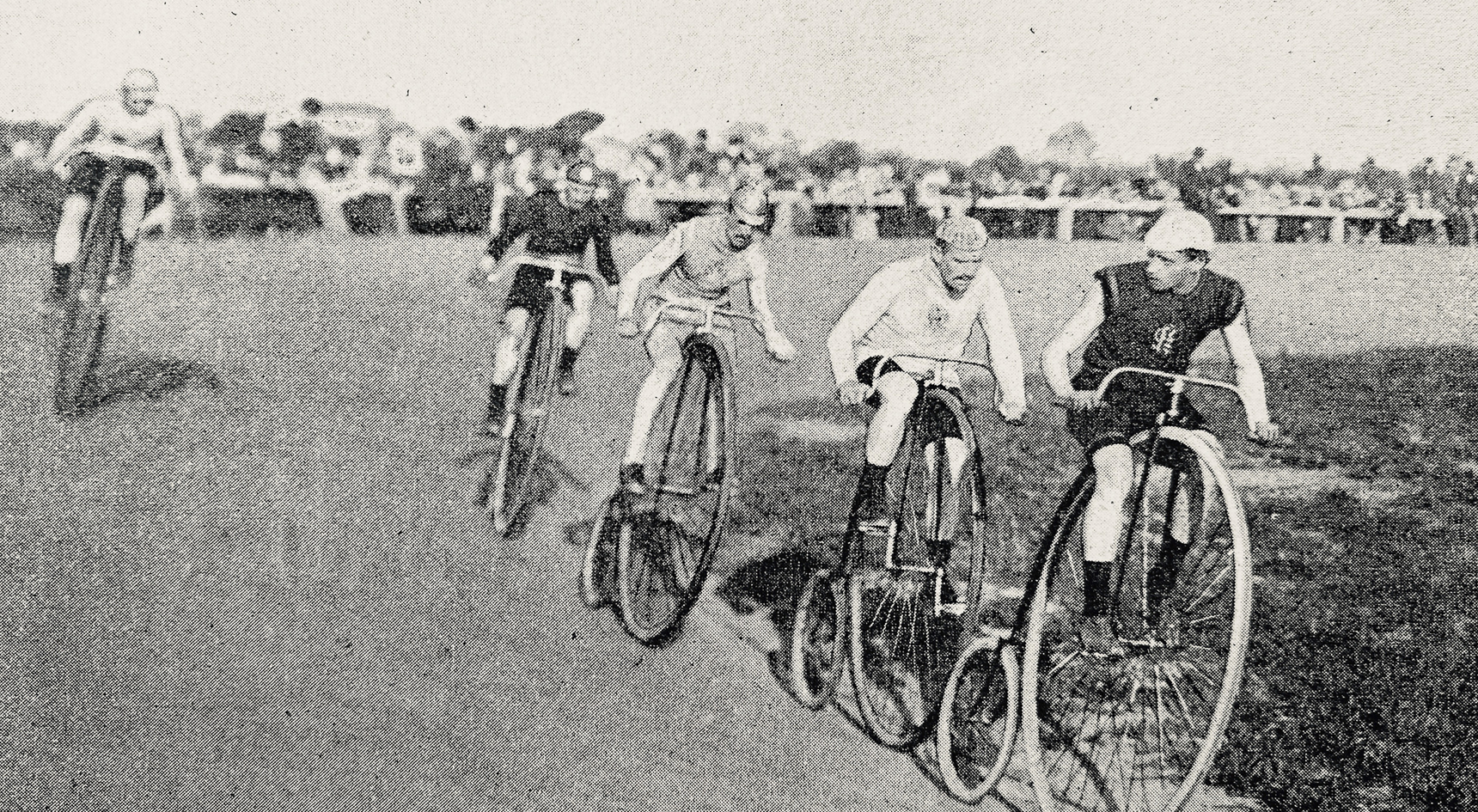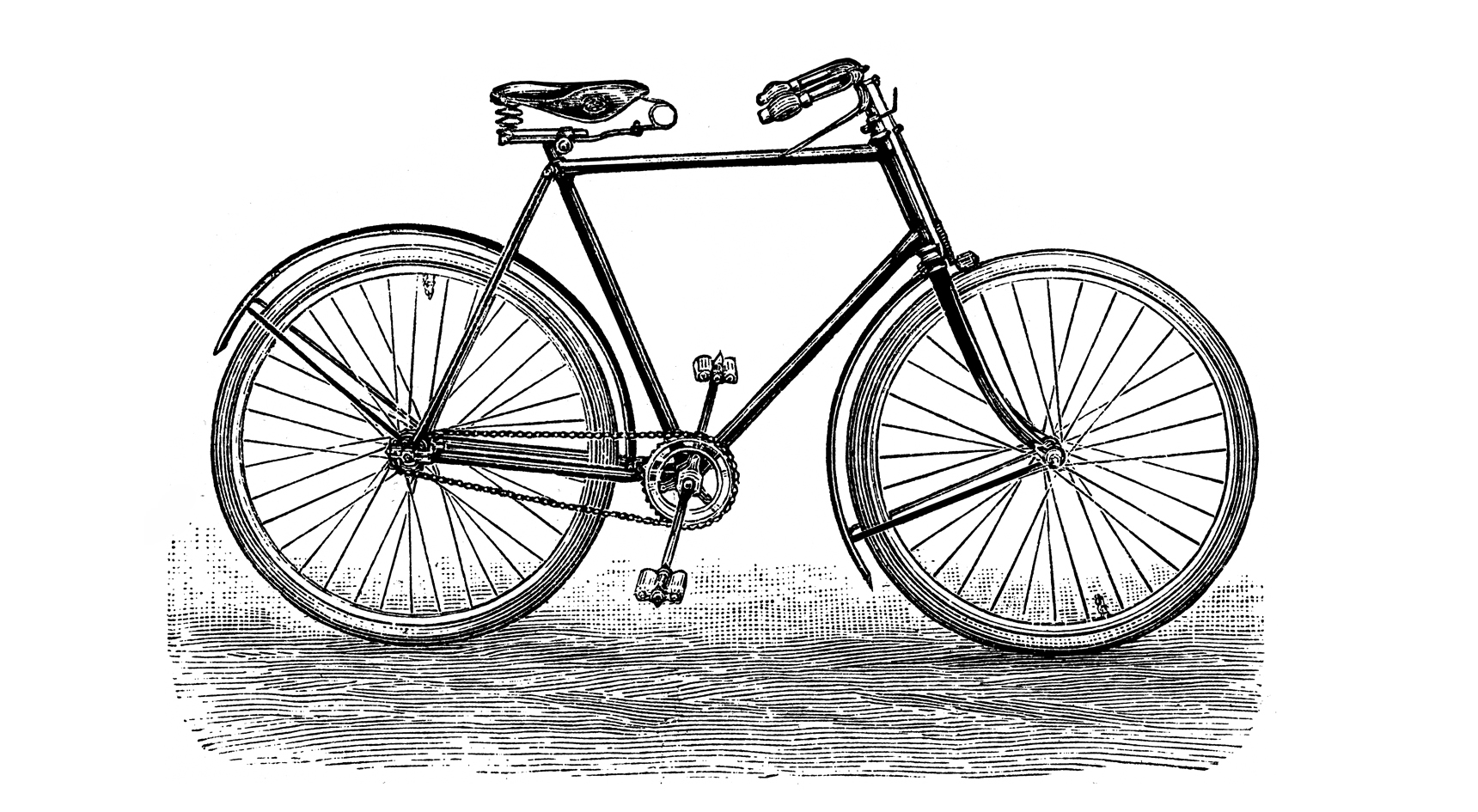Cycling safety: past, present and future

When bicycles first hit the scene, they were considered playthings for the idle rich. But when they became a serious mode of transport, laws were introduced to govern their use and interaction with pedestrians and other road users.
German Karl Drais invented the Laufmaschine ‒ the precursor to the modern bike ‒ in 1817. It was also known as the ‘dandy horse’ because it was trendy among England’s fashionable elite.
However, it lacked a major piece of equipment that’s since become popular among cyclists – pedals. It was powered by the rider’s feet, not unlike a toddler’s balance bike or Fred Flintstone’s car.

Pedals arrived well before chains and gears, and they were attached directly to the front wheel axle on bikes like the ridiculously unstable penny farthing.
The bigger the front wheel, the faster the bike could go and from a greater height the rider could fall.
The real game changer was the chain-drive bicycle, perfected by Englishman John Kemp Starley in 1885.
Using front and rear cogs connected by a chain, it amplified pedal power allowing for smaller wheels to be used.

Sold as the Rover Safety Bicycle (the same company later produced the Land Rover), its design is similar to the bikes we ride today.
It led a transport revolution in Europe and the United States, and bikes became the main form of mechanical personal transportation until the early to mid-20th century.
Not only were they relatively cheap and easy to maintain, they helped get a lot of horse poop off the streets.
With so many bikes on the road, rules were needed to keep everyone safe. Cycling laws, like the requirement for a bike to have a warning device (bell or horn), were all about alerting pedestrians and horse riders that a cyclist was approaching.
But as cars became more prevalent, new rules and infrastructure focussed on the safety of cyclists.
Here’s a brief background to some of our major cycling-related laws.

Protecting your head
In the very early days, bicycle helmets were little more than leather strips that prevented noggin grazes during bike races.
This ‘hairnet’ style was used well into the 20th century. The next major development was a model comprising a hard-shell over polystyrene, popularised in the mid-70s by the Bell Biker helmet – not unlike a construction helmet without the peak.
Of course, no cycle down helmet memory lane would be complete without mention of the iconic Stackhat.
Hailing from that giddy period of sensible fashion choices – the 1980s – the orangey yellow Stackhat was more about function than ’80s cool, plus it was one of the only helmets to comply with the Australian Standard of the day.
The importance of head protection was promoted in a government ad fronted by Molly Meldrum.
Improvements in materials, fitting systems, ventilation and ‒ thankfully ‒ style followed, leading to the vast range of colours, shapes and prices we see today.
The hard shell has all but disappeared with a thinner ‘soft shell’ around dense polystyrene now the norm.
In 1990, Victoria became the first state to introduce mandatory helmet laws, followed by the rest of the country.
Regulations are pretty much uniform nationwide, but in the NT riders over the age of 17 are only required to wear a helmet if they’re cycling on a road.
In Australia, all bicycle helmets must comply with Australian/New Zealand Standard 2063:2008.

